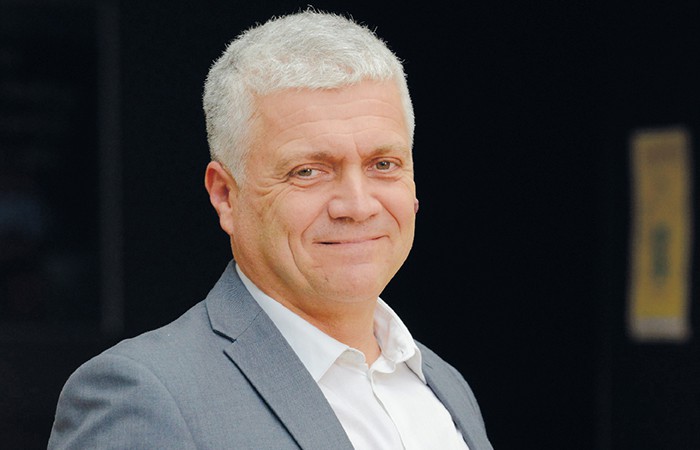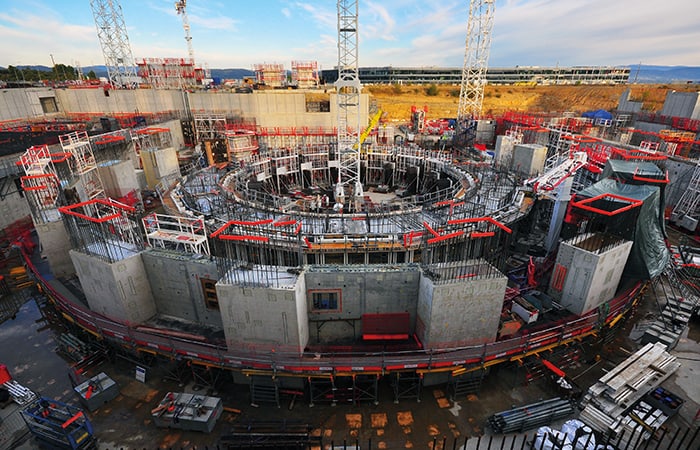
Robert Plana has a lot on his plate. The chief technology officer of French engineering contractor Assystem joined the company last September as it was in the midst of refocusing its business. It has sold off 60 per cent of one division, Global Product Solutions (GPS), which works with clients from design through to marketing of products and services, and is now entirely focused on its remaining business area, energy and infrastructure (E&I).
Plana’s career has taken him through several different sectors of engineering, and has spanned industry and academia. “I’m a scientist,” he told The Engineer. “I have a PhD in physics and electronics. I’ve been a university professor in Toulouse, and I’ve had a long journey in science and innovation.”
Before Assystem, Plana worked at GE Digital, where he was in charge of developing an ecosystem with research universities. Prior to that, he headed up innovation programmes for Alstom. He sees his role at Assystem as stimulating innovation across the group and making sure “we will continue being at the forefront of technology and knowledge”. A second part of his role is “to draw a route map concerning the digital transformation of energy and infrastructures”, while a third is “to develop an ecosystem of innovation through the co-development of projects with customers”.
“So you can see the combination of my two previous positions makes me familiar with the roles I’ll be taking on with Assystem,” he said. “What is new for me is working with an engineering company and that’s part of the reason I joined; the challenge is very exciting. I met very inspiring people and was enthusiastic about the project so decided to leave GE for Assystem.”
E&I is active in a variety of roles, most importantly nuclear engineering, transport infrastructure and infrastructure for life sciences. “The idea is to become a leader in nuclear engineering, but with the evolution of the energy mix and increasing urbanisation, we want to take a position in renewable energy, smart grid and transportation systems on one side. On the other side, we have competencies in the qualification, verification and certification of the infrastructure for life sciences, chemistry and the steel industry and so on.”
The life sciences side is complex. “We are designing, commissioning, starting and maintaining manufacturing sites where the life science industry is developing its products, so we will not develop products; we will develop the infrastructures in which the products and medicines will be developed,” Plana explained. “That’s very important, because today there is a strong need to optimise the energy infrastructures to make sure the qualification and certification will be done in the fastest and most efficient way using a paperless approach.”
Another aspect of their work here will include predictive maintenance, which Plana regards as process optimisation rather than development; “it can be referred to as asset performance management,” he said. “You might have a fleet of robots or some other equipment and you need to ensure that availability of these asset is maximised and that the maintenance scheme is well handled and controlled.” This is a key aspect of control of costs for such facilities, he added.
Assystem can be main contractor or a subcontractor on such projects, Plana said. “We can have a situation where we are running the project management and approaching different subcontractors, and we can also be in a position where we are installing and configuring the infrastructure, and later on we can be in a position where we are maintaining the equipment.”

However, it is in the nuclear sector where Assystem hopes to really make its mark. “When we sold the GPS entity, we also took the opportunity to take some equity in Areva, so we hold five per cent of that company. We are also partnering with EDF, of course, and with Rusatom. In the UK, we are discussing with Rolls-Royce around a small modular reactor (SMR) programme. This is our flagship investment project; SMR is somewhere we are going to be investing heavily in the future.”
Assystem is regarded as a medium-sized company, and in its new configuration will have about 4,000 employees. It is, however, well known for its ability to handle complex projects and can therefore compete with much bigger companies. Like many engineering organisations, it is currently coming to grips with the Internet of Things (IoT) or industry 4.0. “IoT will modify the way we do systems engineering in the future,” Plana said. Up to now, he elaborated, systems engineering was mainly driven by the clients’ requirements. The hallmark of IoT is its capacity to generate huge quantities of data, and while this can be challenging, Plana sees it as a key advantage.
Fresh data can be consolidated with the core data from a facility, and this creates “new patterns concerning the behaviour of an asset,” Plana said. “That creates an opportunity to do systems engineering driven by both requirements and data. We believe this is an original way to approach the future of systems engineering, where we will be able to do design in the fastest way and a more efficient way, respecting the client’s deadline with higher accuracy and also installing digital continuity along all the engineering process.”
This will be an advantage because previously design was done on one side of the project, commissioning on another and operations on yet another. “With digital continuity we can overcome that, and product life-cycle management (PLM) is one way to do that, but PLM reaches limits when you want to introduce real-time data.”
A key advantage of IoT is its ability to handle real-time data. IoT integration platforms will allow Assystem to connect technology and tools, Plana said, thereby allowing them to develop a customised application for each customer designed specifically to release value. “There are two levers,” Plana said. “One is systems engineering driven by data and requirement, and secondly there is integrating IoT platforms for our customers.”
In a world of increased connectivity, Assystem plans to be a key connector, and Plana wants to hold that key.










Water Sector Talent Exodus Could Cripple The Sector
Well let´s do a little experiment. My last (10.4.25) half-yearly water/waste water bill from Severn Trent was £98.29. How much does not-for-profit Dŵr...